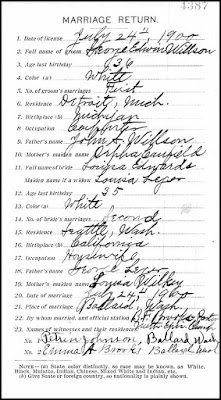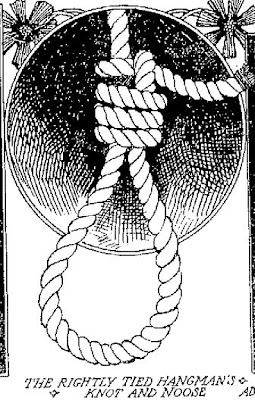 |
| What I imagine Albina might have looked like.... |
It was in the fall of 1907, when Albina "Bina" Bargala fell in love with John "Jack" Keyes, of Plymouth. She was Native American, English and Chilean while Keyes was Irish and Canadian.
It appeared that the couple were smitten for one another despite the fact she was only 15, and Keyes was 28. Albina ran away several times to be with Keyes, which upset her family. Maybe the couple thought their love story was exciting, almost like Romeo and Juliet sneaking off to see one another, but lovesick Keyes only found himself facing charges of kidnapping by Albina's father, Francisco.
While still in jail on the kidnapping charges, Albina's father brought Albina to the county jail on January 16, 1908, and allowed his daughter to marry John Keyes. Charges were dismissed and the couple left the jail as man and wife, headed back to his home in Plymouth. It was not long until Albina realized that John and his family were not on the 'up and up' in the county. In fact, by September of that same year, she found herself pregnant and all alone when John and his brother, Edward were arrested for burglary and sent up to San Quentin on a 5 year stint. As luck would have it, while the two brothers were incarcerated together, they got off on good behavior and both were paroled early. John on September 1, 1910 and Edward in 1911.
 |
| Keyes' Mug Shot 1910 |
The Tragedy -- August 29, 1918
"Brutal Husband Kills Wife And Child With Axe-
One of the most brutal murders it has been our duty to record occurred yesterday sometime before noon at the Head place*, about two miles up the ridge from the Summit House, when Jack Keyes with the blunt side of an axe crushed the skull of his wife, Bina Keyes, aged 24, and then inflicted a fatal blow with the same instrument on the forehead of their 6 month old daughter, Marie Keyes.
The first known of the crime was about 8:30 last night, when Keyes came to the County Hospital in Jackson and asked Superintendent Murphy for some poison. Murphy asked what he wanted it for, and Keyes replied that his had killed his wife and baby with an axe. Murphy told him it was hard to get poison but Mr. Dodd, the nurse, would take him down town for some, and while they walked away from the building Murphy quickly called up the Sheriff, who met Keyes shortly after this side of the hospital. Keyes told the Sheriff he had killed his wife and baby because a lady told him his wife was an anarchist. The Sheriff placed Keyes in jail and went to the scene of the murder.
When asked why he killed the child, Keyes said he figured the baby was an anarchist also. He said he struck his wife several times with the axe before the fatal blow crushed her skull. After the murder Keyes washed the bodies, dressed and covered them. He sat around the house during the afternoon, until the time he came to Jackson.
Keyes showed absolutely no signs of being intoxicated, as testified to by both Superintendent Murphy and Sheriff Lucot at the inquest held here today by Coroner Dolores A. Potter.
During the inquest Keyes, angered at the removal of a stove poker from his reach, sprang from his chair and attacked Deputy Sheriff Ford. Instantly a dozen men were on the job and a well-directed blow on the murderer's neck by Telephone Manager Watts, a juryman, floored the belligerent.
When asked if he had anything to say, Keyes said he wanted to be hanged. Other than that he made no further statement. Keyes has been in trouble before. It is said he and his wife quarreled frequently. She feared to return to him from the County Hospital, where the baby was born on March 6 of this year." ---Amador Dispatch (8/30/1918)
 |
| Keyes' Mug Shot 1918-1919 |
After further examination, the doctors at the State Hospital felt he was within the mental capacity to stand trial, and so they sent him back up the County Jail in Jackson to face the murder charges of killing his wife and baby girl the year prior. On November 13th he pleaded guilty and by the time the November 21, 1919 edition of the local paper came out, he had been convicted and sentenced to life in prison.
 |
| Amador Ledger (11/14/1919) |
 |
| Amador Ledger (11/21/1919) |
 |
| Mother and Child.... |
Conclusion
When going back to research this story I felt so sad for Albina and baby Marie. For one, Albina had been a young woman stuck in an abusive marriage during the early part of the 20th Century. Remember this was a time when leaving your husband was taboo. My heart is broken for baby Marie, knowing she didn't even live to see her first birthday.
John Keyes was mentally sick to do what he did, and I wonder how he came to be that way in the first place. Some things we will never find answers to though. Besides the heartache for the loss of these two innocent lives, I also wanted to learn what became of their older son Johnny, but I found no information on what happened to him. More than likely his grandfather raised him, at least I hope so.
John Keyes was mentally sick to do what he did, and I wonder how he came to be that way in the first place. Some things we will never find answers to though. Besides the heartache for the loss of these two innocent lives, I also wanted to learn what became of their older son Johnny, but I found no information on what happened to him. More than likely his grandfather raised him, at least I hope so.
If you head out to the Cemetery in Jackson it was nearly impossible to locate Albina's grave, but one contributor on Find-a-grave, Steve Jones managed to do it. I have since contacted him about finding the exact location, and I hope that soon I can have some sort of small marker with a stake for the ground designed in the future to mark the spot where Albina and baby Marie are buried. Everyone deserves to be remembered, and they have been forgotten for far too long.
I will try to keep everyone updated if and when we get a marker put up for Albina and Marie!
I will try to keep everyone updated if and when we get a marker put up for Albina and Marie!
Rest in Peace, Albina and Marie....you will never be forgotten again.
(Copyright 2018 - J'aime Rubio, www.jaimerubiowriter.com)
Sources:
Amador Ledger: August 30, 1918; May 30, 1919; November 14, 1919, November 21, 1919
Sac Union: November 15, 1919
Bakersfield Californian: May 27, 1919
Census Records: 1910;1920;1930;1940
Amador County Marriage Records, 1910.
Note: The "Head Place" as noted in the newspaper is the Head Ranch which was located off of Ridge Road and was once owned by James Head. After his death, his wife Mary Ann Gardner inherited the ranch. Mary Ann was the mother of the infamous Emma Le Doux, who murdered her husband Albert McVicar in Stockton and stuffed his body in a trunk and left it at the train depot in 1906. According to records, Keyes was a laborer, so more than likely this family lived on the ranch of the Head family.
(Copyright 2018 - J'aime Rubio, www.jaimerubiowriter.com)
Sources:
Amador Ledger: August 30, 1918; May 30, 1919; November 14, 1919, November 21, 1919
Sac Union: November 15, 1919
Bakersfield Californian: May 27, 1919
Census Records: 1910;1920;1930;1940
Amador County Marriage Records, 1910.
Note: The "Head Place" as noted in the newspaper is the Head Ranch which was located off of Ridge Road and was once owned by James Head. After his death, his wife Mary Ann Gardner inherited the ranch. Mary Ann was the mother of the infamous Emma Le Doux, who murdered her husband Albert McVicar in Stockton and stuffed his body in a trunk and left it at the train depot in 1906. According to records, Keyes was a laborer, so more than likely this family lived on the ranch of the Head family.

















